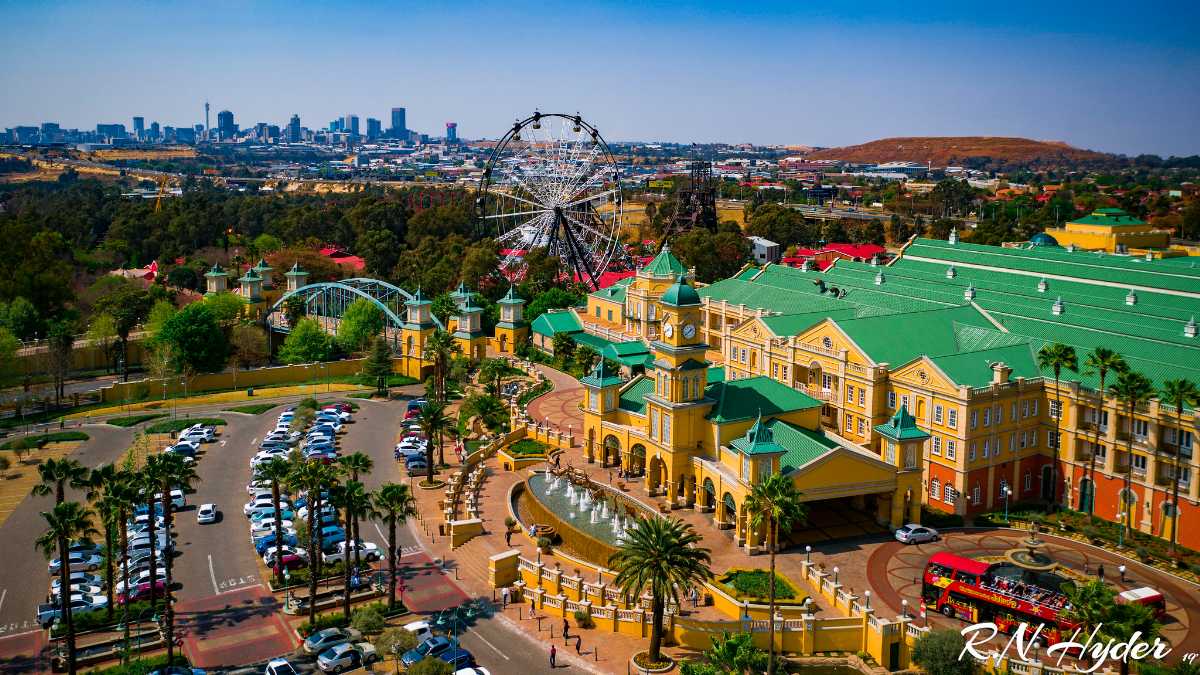The 6-Minute Rule for Johannesburg North Attractions
The 6-Minute Rule for Johannesburg North Attractions
Blog Article
The smart Trick of Johannesburg North Attractions That Nobody is Talking About
Table of ContentsHow Johannesburg North Attractions can Save You Time, Stress, and Money.3 Easy Facts About Johannesburg North Attractions ShownThe Ultimate Guide To Johannesburg North AttractionsGetting My Johannesburg North Attractions To WorkThe Ultimate Guide To Johannesburg North AttractionsThe Single Strategy To Use For Johannesburg North Attractions
The city owes its location to the existence of a a lot more valuable resource: gold. The city expanded on the edge of the Witwatersrand Main Coral reef, a subterranean stratum of gold-bearing quartz-silica conglomerate that arcs for numerous miles underneath the Highveld. The majority of the gold mines in the city stopped operation in the 1970s, but in its day the Witwatersrand gold industry made up more than 40 percent of the globe's yearly gold production.Johannesburg has a pleasant climate. Summertime temperatures average concerning 75 F (24 C); winter temperature levels average about 55 F (13 C) and only occasionally dip listed below freezing. The city appreciates regarding eight hours of sunshine per day in both winter and summer. Rainfall averages regarding 28 inches (700 millimetres) per annum, yet the total varies substantially from year to year.
What rainfall the city obtains falls nearly specifically in the summer season months, typically in stunning late-afternoon electrical tornados., where many locals still depend on coal for fuel.

Johannesburg North Attractions Can Be Fun For Anyone
The equilibrium of the city is occupied by whites. Holiday accommodation varies in character and top quality.
Physical growth, although rather limited by transportation, continued swiftly as migration to South Africa, and Johannesburg in particular, boosted significantly.
The majority of inadequate residential areas were combined, with bad blacks and whites cohabiting, although the wealthy suburbs were normally reserved for whites. This transformed with the political election of the National Event in the 1948 political elections, that began to formalise the system called apartheid. Racism officially assigned which suburbs each race could live in under the Team Areas Act.
The previous system of eleven numbered regions was reorganised in 2006. Marshalltown, as seen from the top of the Carlton Centre. The M1 and M2 run behind the structures, and the southerly suburban areas extend past the freeway boundary. The central city of Johannesburg lies within the city's Area F. The estimated populace of the area is 200,000, [] but the variety of people living in the central city on an informal basis is unidentified, as several are unlawful immigrants. A lot of higher-income locals and white individuals have actually transferred to the north residential areas and have been replaced by lower-income black individuals. The joblessness, education, and age profiles of the location are all unknown, because of the trouble of obtaining reputable details about the area.
All about Johannesburg North Attractions
Yeoville and Bellevue have a mix of home structures and single property systems on small lots. The region is located on a mountainous divide that runs from eastern to west. One of the most obvious geographical feature is Observatory Ridge, which is named for the large observatory situated on it. The leisure areas are no longer used, due to security problems.

Johannesburg Arena, a training see page school for both the Golden Lions and Orlando Pirates, is nearby. The eastern suburban areas of Johannesburg are situated in the city's 7th [] and 9th [] regions. The location is also functionally integrated with East Rand boundary communities outside of the main border of Johannesburg, such as Bedfordview and Edenvale (both part of Ekurhuleni Metropolitan Municipality).
The Best Strategy To Use For Johannesburg North Attractions
R. Tambo International Flight Terminal). The eastern suburban areas are several of the oldest areas of Johannesburg, there are large communities of Jewish and other European backgrounds, most of the populace is English speaking. There are 3 golf programs in addition to a number of secured ridges with viewsites. There are several strong and up-market amusement and shopping locations in the east such as the Eastgate Shopping Center and the Greenstone purchasing centre.
Initially built to house male migrant workers, many have been boosted as residences for couples and families. The suburban area was not traditionally permitted to produce work centres within the location, so almost all of its image source locals are travelers to other parts of the city.
All About Johannesburg North Attractions
The N1 Western Bypass attaches the north residential areas with the north-western residential areas. The household locations in the north suburbs are primarily official, without any considerable areas of casual real estate, or real estate that lacks a permanent framework. Although this is a well-known location, there is a pattern of land use modification from domestic to business, particularly along main arterial roads and around well-known nodes.
Roads to the east and west are much less well created, as there are no freeways travelling in that direction. In the direction of the north border of the city, the density of development reduces, leaving huge locations of undeveloped land around Midrand.
The smart Trick of Johannesburg North Attractions That Nobody is Discussing
, which is located on a hill ignoring the inner city and Hillbrow.
Report this page